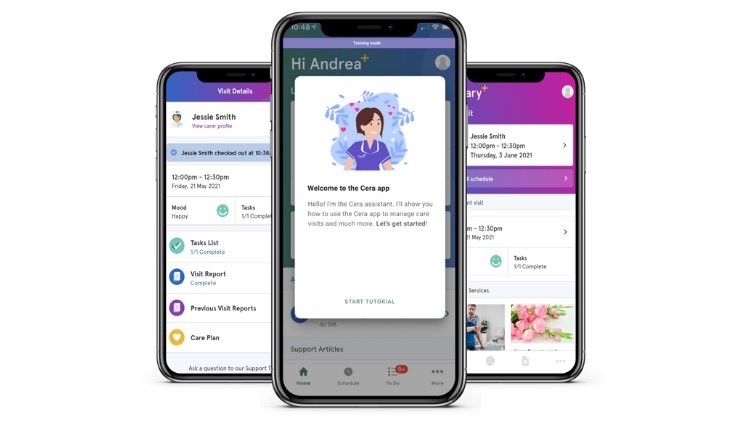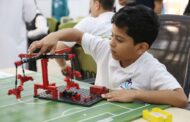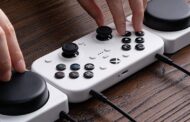By Sarah Sarsby
Published in at today, 28th June 2024
A consortium of partners has developed a new AI-powered and Internet of Things (IoT) enabled device that helps identify when older or vulnerable people who live alone may need immediate medical support, using electricity or smart meter data to monitor the use of household appliances and electrical items.
CENSIS – Scotland’s innovation Centre for sensing, imaging, and IoT technologies – the University of Edinburgh, Mydex CIC, Care builder, and Blackwood Homes and Care have built and trialed the technology as part of Blackwood Homes’ Peoplehood project across 19 households in Glasgow, Dundee, and Buckie in Morayshire.
Read also: نظارة eSight 3 لمساعدة الأشخاص المكفوفين على الرؤية
The device is linked wirelessly to a smart meter or conventional electric meter and then disaggregates the data to identify certain high-power electrical items within the home, such as kettles, microwaves, washing machines, and electric showers. Using machine learning, it can tag each item and determine when they have been turned on and off, and, most importantly, spot any anomalies.

In a case where, for example, the person usually wakes up and boils a kettle to make tea by 8am, the monitoring device will identify this as normal behavior. However, if the kettle has not been turned on by 9am, they will receive an automated text message. If there is no response, an alert will be sent to their nominated contacts – a family member, carer, neighbor, or a response service – who will be notified to check on them.
The device uses a hub process algorithm, which means all the data can be processed at the property, rather than at a central point. Together with a personal data store from Mydex, this puts the individual in full control over who can see and access the data associated with their household.
Stephen Milne, the director of strategic projects at CENSIS, said: “This project is all about repurposing energy data to help inform social care and supporting healthy ageing.
“The system learns the typical activity of the individual living in the household and then spots any erratic behavior, helping to identify when they may have issues. These could be one-off events, like a fall, and with further research, the system may be able to track changes over a longer time period that may indicate gradual and more difficult-to-spot health issues, such as the onset of a condition like dementia.
“While there are other technologies related to monitoring activity, this is the first full service deployment that has been implemented through passively monitoring a property’s smart meter system. The device can also pick out each item being monitored, making it much more likely to spot any anomalies, and is barely noticeable for the householder.
“After these trials, we are looking to develop the technology to the commercial product stage and deploy it at a much bigger scale, and are open to taking this forward with talks with potential long-term partners.”
The machine learning algorithm monitors the use of power in 10-second intervals, analyzing the power signatures coming from the household. Over the course of the project, the University of Edinburgh built up a library of these signatures and tagged each high-power item in the houses to identify which ones are being used and when.
Lynda Webb, a senior researcher in the School of Informatics, the University of Edinburgh, added: “The idea of monitoring electricity use in the home, for spotting if a person might need help, was first conceptualized 10 years ago. A prior project of 250 homes in Edinburgh enabled the development of the algorithms that are used today in this project. It is so exciting to see the application of this idea and the years of algorithm development becoming a service which is already impacting the lives of people in the trial.”
Blackwood Homes and Care’s three-year Peoplehood project aims to develop a future-proof model for independent living for its residents, allowing people to live healthier and happier for longer. Through a series of initiatives, it will set out a blueprint for welcoming communities with age-friendly homes, supported by cutting-edge technologies, making independent living achievable and sustainable as people grow older.
Lindley Kirkpatrick, Peoplehood programmed manager at Blackwood Homes, commented: “The Peoplehood project has focused on developing activities, techniques and technologies and we are delighted with the progress that has been made across several fronts.
“The development of this new device utilizing AI technology could, however, prove to be one of the most exciting that we have seen. For cares and loved ones to get ahead of time notice of potential medical emergencies as well as the onset of conditions of dementia is of huge importance.
“We very much look forward to examining the details that come out of the trial to understand how this has aided participants of the Peoplehood project.”
Reference :

Sarah Sarsby
Digital Content Editor
Sarah joined BHTA Engage who produce (THIIS Magazine, AT Today) in April 2018 as the new Content Writer and Marketing Assistant.
After graduating with a Masters in English Language from De Montfort University, Sarah will be working on all BHTA Engage publications and help ing develop new activities.
Sarah has many different hobbies and interests, she enjoys writing and cooking in her spare time. She also likes to stay active by swimming and practicing yoga.
Digital Content Editor
020 3833 0792


























